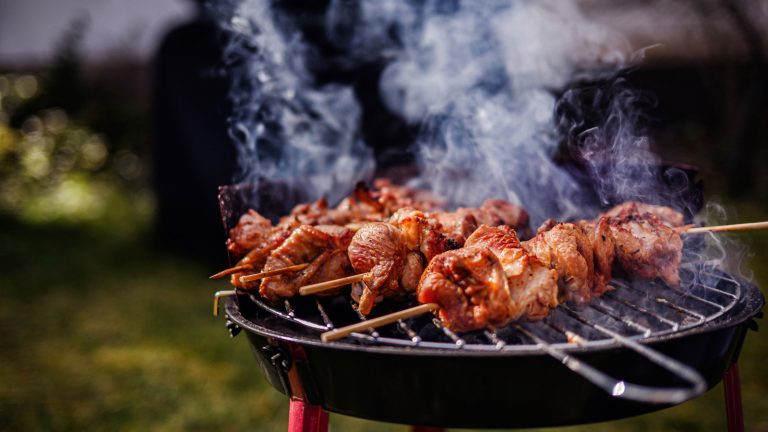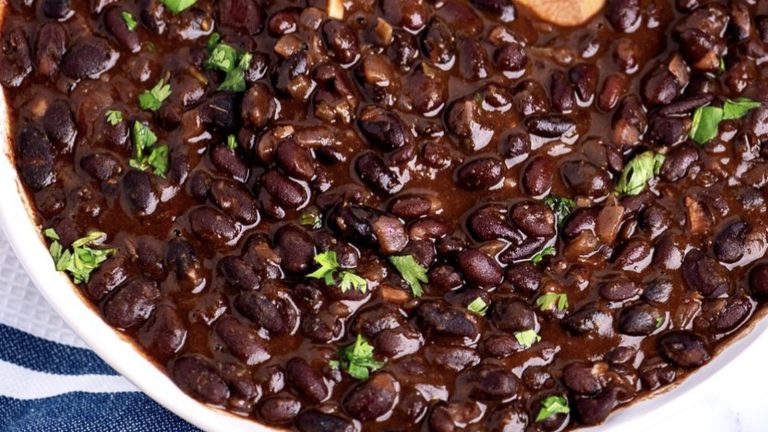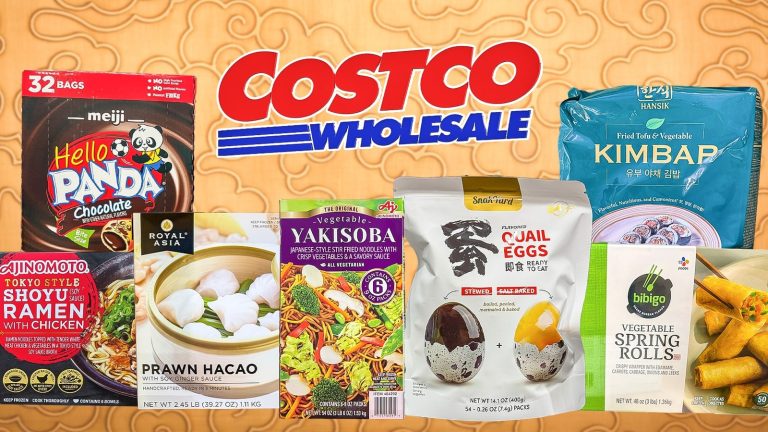With years of professional kitchen experience to his name, Anthony Bourdain worked as a short-order cook and was inspired by some of the world’s best chefs before finding success as a travel and food writer, and ultimately a TV personality. In 2016, Anthony Bourdain published “Appetites: A Cookbook.” The family cookbook contains the greatest hits of Bourdain’s home-cooked meals, with the occasional homage to his favorite New York City staples and mesmerizing dishes from his travels abroad peppered in.
Using the cookbook as a principal source, I scoured the recipes in search of Bourdain’s essential kitchen tools. Derived from a shortlist of the most utilized items found in recipes across the cookbook, many are ubiquitous in commercial and at-home kitchens alike. While they’re all irreplaceable, invaluable workhorses in their own right, several weave together Bourdain’s personal tendencies as a home cook with the techniques he acquired as a professional chef. While Bourdain advises everyone to dine out on Tuesday nights, for delicious eating the rest of the week, make sure you have these ten Bourdain-approved kitchen essentials.
Heavy-bottom pan(s)
An essential tool for cooks, no kitchen is complete without these two pans: the sauté and the sautoir. From searing veal shanks to deep frying chicken, the workhorse pans appears in all sizes throughout “Appetites: A Cookbook,” showing up in nearly all of Anthony Bourdain’s recipes. Indeed, mention of the heavy-bottom, high-quality pans are plenty — Bourdain’s Hollandaise sauce requires an entire stovetop’s worth, and that’s not including the sautoir to poach the eggs in.
A sautoir is a wide-based pot with straight walls, commonly used for sauces and reductions because its flat, heavy bottom helps to distribute heat for even cooking. Still, perhaps the most prevalent cooking technique out there is the sauté method, which utilizes a pan with short, slightly curved walls to simply fry ingredients in a little fat over high heat. Sautéing works equally well for browning quick-cook vegetables in aromatics and searing meats before braising. The possibilities are practically endless, as long as you avoid common sautéing mistakes and start with a sizzling-hot pan.
There’s an entire section in “Appetites: A Cookbook” dedicated to sandwich recipes, and while Bourdain’s favorite New York City sandwich isn’t included in the lineup, a chopped liver on rye is. An homage to the chopped liver at Barney Greengrass, a New York institution Bourdain highlighted in a 2002 episode of Food Network’s “A Cook’s Tour,” a first line of the recipe reads as so many others begin: “In a large, heavy-bottom sauté pan…”
Whisk
Not known for its versatility, this decidedly self-evident cooking tool can be found in just about any kitchen. It’s such an obvious choice that Anthony Bourdain found better reason to champion the humble fork in the pages of his family cookbook, with the casual mention of the whisk in reference to the action as opposed to the object. But for those reading between the recipe’s lines, the art of the whisk is more complex than it seems.
A testament to technique, Bourdain’s use of the whisk is demonstrative of his culinary expertise. Whether incorporating ingredients for vinaigrettes and marinades, folding in stock to finish a creamy polenta, or making a roux to build into a béchamel, the whisk is always there to make it happen. While Bourdain doesn’t note any specific types of whisks, it’s safe to assume he generally employed a French whisk. The sturdy, all-purpose whisk with a narrow balloon shape is the default varietal in restaurant kitchens.
Deli containers
Maybe the single biggest indicator of Anthony Bourdain’s background as a cook in professional kitchens is the photograph of Bourdain’s fridge in “Appetites: A Cookbook.” The photo shows stacks of quart-size deli containers lining the shelves, labeled and dated with masking tape, with the occasional rare item like durian fruit and a dry-aged pig shank.
The humble accessory used in refrigerator organization and food preparation is beloved by many chefs, making these uniform, reusable containers ubiquitous in restaurant kitchens. Available in a variety of sizes, the endlessly versatile deli tub is not only fit for storage, but it’s also used for eating and drinking out of in professional kitchens where glassware is prohibited.
Many of Bourdain’s recipes contain specific items that require their own lengthy preparation, so it’s usually recommended to cook those in advance and preserve for later use. A good example is eggs Benedict, considering the multi-step process that is making Hollandaise sauce. According to Bourdain, “[Y]ou have made the hubristic decision to serve eggs [expletive] Benedict to a party of ten guests in your home,” a time-consuming process — so do yourself a favor and have a deli-quart of Hollandaise prepped and ready for use.
Blender
Between cream of tomato, black bean soup, and white gazpacho, Anthony Bourdain employs a bevy of blenders to reach the desired consistency of each dish. According to Bourdain, “Tomato soup remains the taste of comfort, security, and recently dried tears,” which may be a way of saying it should be pureed until smooth and creamy. For such results, Bourdain recommends using a blender; however, for a slightly chunkier texture (like that of black bean soup) Bourdain opts for an immersion blender instead.
In addition to these Western soup staples, Bourdain brings his own Kuching-style laksa recipe to the cookbook, a Malaysian noodle soup with a spicy, tamarind-infused (among several other ingredients) paste. Indeed, there’s a lengthy list of spices, nuts, and seeds necessary to make the Sarawak laksa paste, with uncommon ingredients such as galangal that can be nearly impossible for U.S. consumers to find. Lucky for those passionate enough to make the paste Bourdain describes as “a labor of love,” he recommends fresh ginger root as a decent substitute. A food processor grinds the coarse ingredients into a paste, working in batches to ensure an even consistency, before the mixture is transferred into a wide, heavy-bottom sautoir.
Stockpot
A fully customizable staple that serves as the bedrock of all flavorful cooking, Anthony Bourdain’s recipe for a dark universal stock calls for chicken instead of the traditional veal, noting that “Chicken bones are certainly easier to come by.” But Bourdain goes on to include recipes for shellfish and even octopus stock, the backbone of the Provincetown-inspired Portuguese squid and octopus soup.
Surely, the list of recipes built on homemade stock are plenty, but New England clam chowder requires a stockpot from the start — that’s because the heavy bottom helps render the salt pork’s fat evenly, and later, keeps the milk-flour slurry mixture from sticking.
While it may take up more of your kitchen’s cabinet space, there are lots of different uses for a stockpot. From frying to steaming, it’s a must-have kitchen tool that Bourdain relies on to deliver decadent stocks, which he describes as “[T]he most important factor in making soups, sauces, and stews that taste like they’ve been made by a highly trained professional.”
Wooden spoon
Another kitchen tool that all too often doesn’t get the praise it deserves, Anthony Bourdain’s casual employment of the wooden spoon in “Appetites: A Cookbook” isn’t all that casual. In his recipe for saffron risotto, for instance, the kitchen tool steers the entire cooking process, as risotto famously demands near-endless stirring. Moving slowly to ensure a light texture, the wooden spoon helps the butter and cheese incorporate into the rice while allowing air to enter the mixture.
It’s the perfect mixing tool for dishes where a light texture and delicate touch is needed, but the wooden spoon is also a sturdy scraper. For example, in Bourdain’s recipes for osso bucco or beef chili, he consistently employs a wooden spoon to dislodge the browned bits on the bottom of a pan before deglazing.
There are plenty of reasons why Bourdain may prefer the wooden spoon over other materials like rubber and metal. For one, it’s comfortable in the hand, and secondly, it has a low heat retention; meaning you can use a wooden spoon while cooking over a flame without the risk of burning yourself.
Sheet pan
The irreplaceable rectangular cooking tool whose name changes according to the kind of kitchen it calls home (and its size), Anthony Bourdain dutifully refers to the workhorse by its commercial label: the sheet pan. While a home cook may address the same item as a cookie sheet, Bourdain isn’t coating any of his pans in nonstick cooking spray.
Instead, Bourdain employs the sheet pan as a way to roast poultry bones and parts before incorporating into a stock. Unlike a roasting pan with high walls, the sheet pan’s short, rolled edge mimics a spout, which is perfect for pouring out the excess grease and juices after roasting.
Like many of Bourdain’s kitchen tools, the sheet pan is versatile in its applications. In the section of “Appetites: A Cookbook” dedicated to Thanksgiving dinner, the sheet pan doubles as a tray. In fact, Bourdain uses two, one for dismantling the cooked turkey and one for resting the meat pre-meal.
Dutch oven
Regardless of a recipe’s origins, the Dutch oven is perhaps the most utilized receptacle for cooking traditional family meals. Indeed, it’s a must-have kitchen tool — for Anthony Bourdain, and for any self-respecting cook — and one that takes center stage in Bourdain’s recipe for the Sardinian classic malloreddus with wild boar sugo.
As the labor-intensive recipe denotes, the Dutch oven should never be crowded with meat, but arranged in a single layer and worked in batches to ensure even browning on all sides before braising with aromatics. For other slow-cooked family recipes like tomato sauce, this method is a sure-fire way to deepen the flavor.
Bourdain’s riff on the French classic poulet “en vessie” also calls for a Dutch oven. “En vessie” actually refers to the method of cooking in which meat is wrapped in pig’s bladder as opposed to the cooking vessel itself. His alternate version foregoes the bladder, and since the dish is poached in chicken broth, nothing but the Dutch oven could pull off a meal Bourdain describes as “[A] perfect combination of extravagant and austere.”
Deep-fry thermometer
Everybody loves fried food, and Anthony Bourdain was especially fond of Korean-style fried chicken. While his recipe requires chef-level technique and ample lead time to prepare the gochujang-based hot sauce, the deep-fry thermometer offers assurance for the ambitious greenhorn who attempts the crispy, spicy delight at home.
Also known as a candy thermometer for its application in confectionery cooking, the kitchen tool monitors the temperature of the fry oil, which is imperative for ensuring thoroughly cooked, but not overdone, fried chicken. Since you’ll be working in batches, it’s an invaluable kitchen tool as temperatures can fluctuate drastically throughout the deep-frying process.
To make veal Milanese, Bourdain pounds and dredges veal cutlets before deep frying in oil to produce the comfort food staple. Again, Bourdain advises home cooks to work in small batches to avoid bringing down the temperature of the oil while consistently monitoring the thermometer and adjusting the flame as necessary.
Knives
Like most chefs, Anthony Bourdain had a penchant for knives – he once bought a knife forged from a blend of meteorite and steel for five thousand dollars. While that one’s a marvel of craftsmanship, Bourdain’s at-home knife bag proves more grounded than cosmic. Beyond Bourdain’s preferred chef’s knife, he holds fast to these three sharp-edged cutting staples throughout “Appetites: A Cookbook” –- the serrated, boning, and paring knives.
Available in a variety of styles ranging in size and sturdiness, a stiff-bladed boning knife is primarily used for taking apart meats and penetrating tough cartilage. This is the style Bourdain employs to dismantle a duck in preparation for pan-roasting. In contrast, a thin-bladed boning knife works well for delicate and precision cuts, such as trimming fat, removing skin, or even filleting a whole roasted fish tableside.
Another appropriate, albeit smaller, tool for trimming is the paring knife. Perfect for poking holes into the skin of each chicken leg while trussing and testing for doneness after roasting, the paring knife is a small but mighty cutting utensil with endless applications. From carving turkey to slicing fresh bread, the serrated knife is the only workable option to ensure a consistently-portioned slice with golden skin — or crust — intact.





